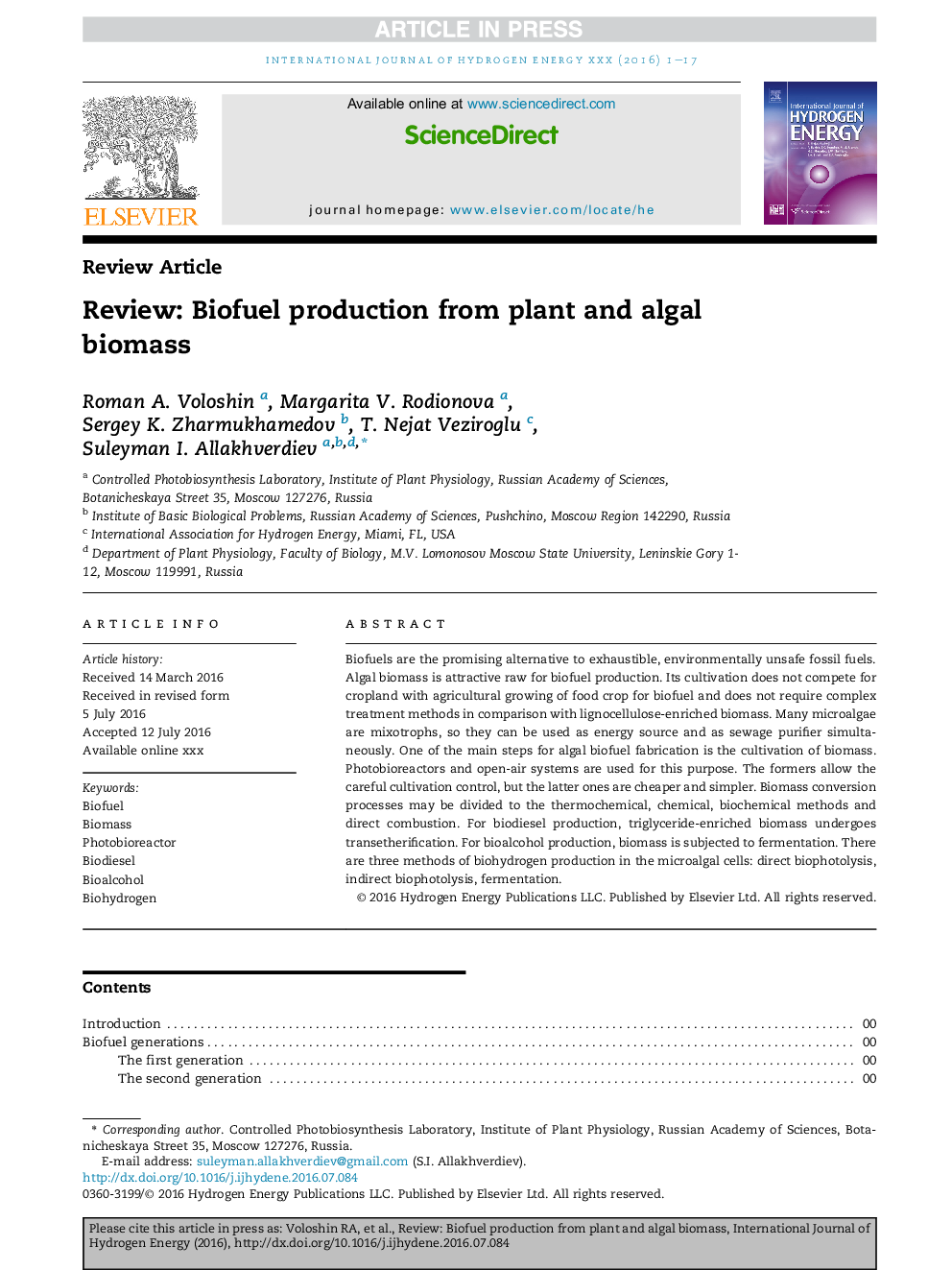| Article ID | Journal | Published Year | Pages | File Type |
|---|---|---|---|---|
| 5148211 | International Journal of Hydrogen Energy | 2016 | 17 Pages |
Abstract
Biofuels are the promising alternative to exhaustible, environmentally unsafe fossil fuels. Algal biomass is attractive raw for biofuel production. Its cultivation does not compete for cropland with agricultural growing of food crop for biofuel and does not require complex treatment methods in comparison with lignocellulose-enriched biomass. Many microalgae are mixotrophs, so they can be used as energy source and as sewage purifier simultaneously. One of the main steps for algal biofuel fabrication is the cultivation of biomass. Photobioreactors and open-air systems are used for this purpose. The formers allow the careful cultivation control, but the latter ones are cheaper and simpler. Biomass conversion processes may be divided to the thermochemical, chemical, biochemical methods and direct combustion. For biodiesel production, triglyceride-enriched biomass undergoes transetherification. For bioalcohol production, biomass is subjected to fermentation. There are three methods of biohydrogen production in the microalgal cells: direct biophotolysis, indirect biophotolysis, fermentation.
Related Topics
Physical Sciences and Engineering
Chemistry
Electrochemistry
Authors
Roman A. Voloshin, Margarita V. Rodionova, Sergey K. Zharmukhamedov, T. Nejat Veziroglu, Suleyman I. Allakhverdiev,
